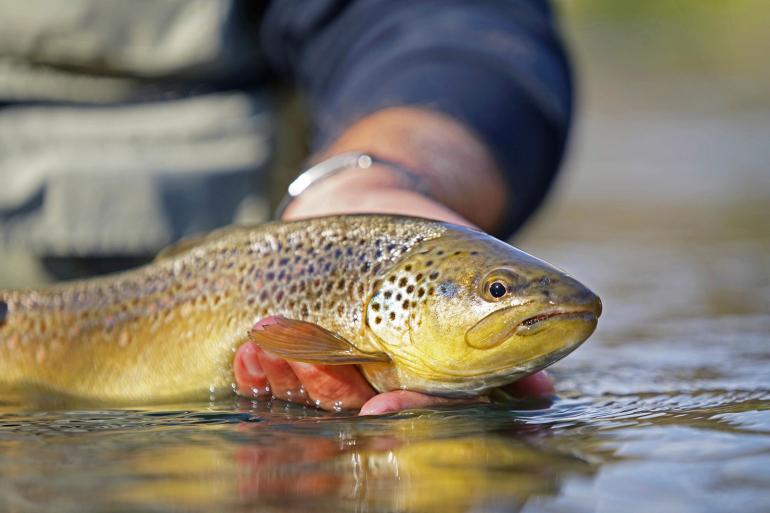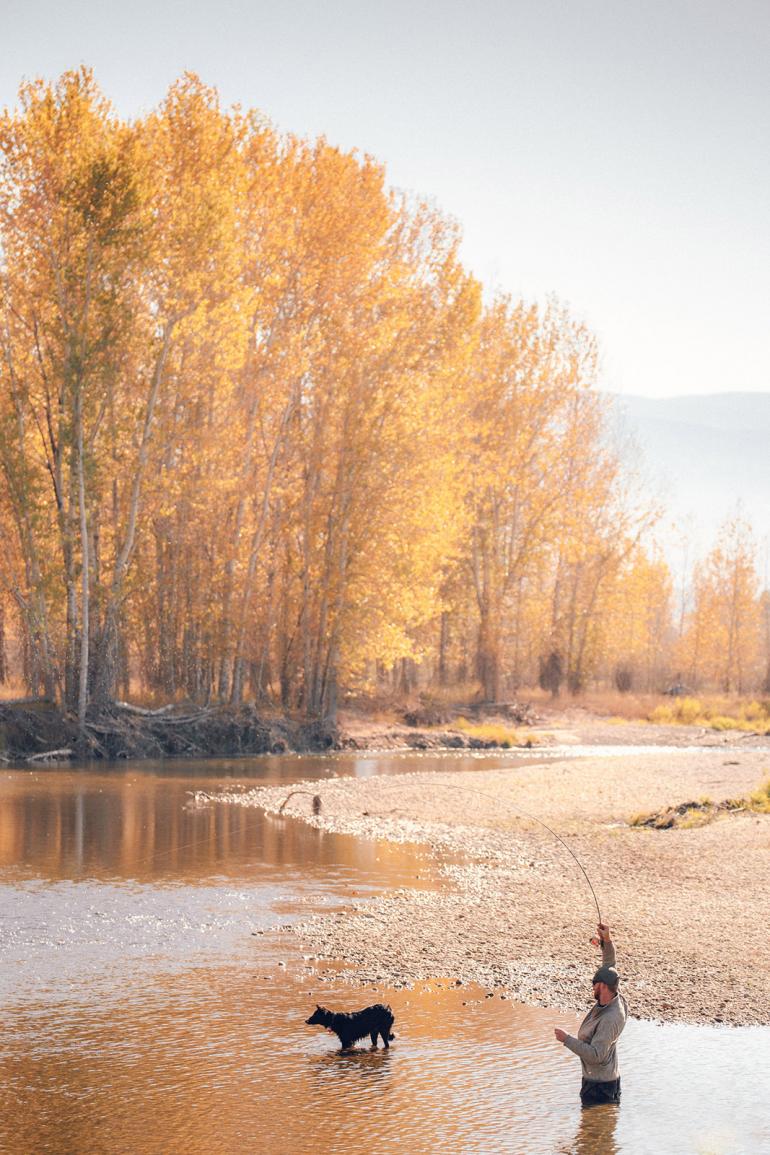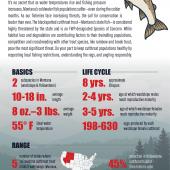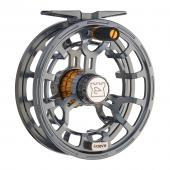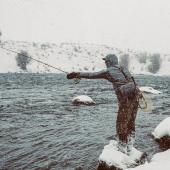Autumn Swing
Fall fishing in Montana.
Autumn is a magical time to be on the river in Montana. The riverbanks are frosty and crisp, the leaves are golden, and the air is filled with the reverberating calls of bull elk. Fall is a time of transition for fly anglers—when the big flies of summer have been put aside and most anglers begin drifting small dry flies through low, clear water in hope of getting a rise.
However, there is another, often overlooked, option for fall fishing in Montana. It’s a method of calm, methodical, and peaceful casting, sharply punctuated by hard strikes from big, powerful trout—I’m talking about swinging streamers. For when it comes down to it, there’s no better way to connect with a big fall trout than on the swing!
Gearing Up
When you swing streamers for trout, you need to beef up your gear. Strikes from big fall trout can come hard and fast, so you need a rod and a leader that can handle the pressure. Instead of your standard 5-weight, boost up to a 6-weight or even 7-weight rod, or perhaps even a two-handed spey rod. Not only will this heavier setup help you win the fight against a big trout, but it will also make it easier to accurately cast big flies repeatedly without completely wearing yourself out.
Leaders and tippets for swinging flies should also be as heavy as you can get away with. In the low, clear water of autumn, trout can become a bit spooky, so it’s best to start with 5x and go up from there. To make your presentation more discrete, use fluorocarbon instead of monofilament as it will be less visible to the trout. You can also use sinking polyleaders to help get your flies on the trout’s level.
Choosing the Right Flies
Picking a streamer for swinging all comes down to the type of water you’re fishing. Generally, you’re going to want to use small to medium flies which imitate the sculpins, small trout, and baitfish that the calorie-hungry autumn trout are looking for. However, if you’re hunting for a monster, you can beef up your fly size to a pattern that’s 6-8 inches long.
In deep, slow-moving water or faster-moving shallow water, you’re going to want to use a fly with a bit of weight. Clouser Minnows, Sparkle Minnows, and Conehead Woolly Buggers are perfect for this sort of work. In slower shallow water, smaller, lighter flies like Muddler Minnows, Zonkers, and Mickey Finns are ideal.
Working the Water
Generally, you’re going to want to swing streamers through currents that are flowing at a fast-walking speed. Look for long runs with a lot of rocks in the middle of the river and slow-moving edges where trout can hold and feed. Ideally, you’re going to want to start at the top of these areas and then fish and work your way downstream, swinging your fly through every inch of water that you can reach.
To swing your streamer, cast down and across the stream at a 45-degree angle. Make a mend to let your fly sink and then allow the line to come tight. Swing the fly on a tight line across the river, pivoting as it moves until it comes to a stop directly below you. Then, strip in your line, take two to three steps downstream and repeat the process, casting at the same distance until you either run out of fishable water or you connect with a big fall trout.


